Physiotherapists aim to re-educate your movement, sensation and balance in order to enable you to reach their potential for recovery of mobility and independence. They can help assess your mobility and suggest and provide equipment such as walking aids, splints or wheelchairs.
Occupational therapists assess your ability to participate in activities of daily living such as personal care, kitchen tasks and ability to manage in the home environment. They provide therapy to support both physical and cognitive (thinking) difficulties.
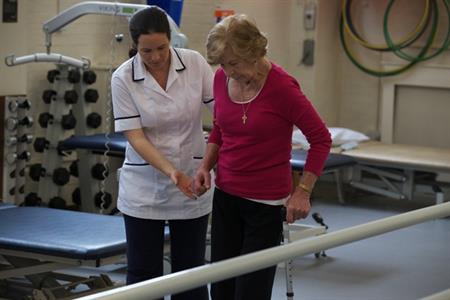 If you’re a current patient reading this, both are about to become your best friends. They are also going to be pushing you hard. This is for a very good reason however. They are going to get you moving. Focusing mainly on your physical rehabilitation, physiotherapists and occupational therapists usually build custom plans to fit these needs.
If you’re a current patient reading this, both are about to become your best friends. They are also going to be pushing you hard. This is for a very good reason however. They are going to get you moving. Focusing mainly on your physical rehabilitation, physiotherapists and occupational therapists usually build custom plans to fit these needs.
During your first appointment with your new therapists, they will thoroughly examine your body, consult your notes, and interview you and/or your loved ones about your symptoms and any setbacks so far. This will allow them to develop a plan that’s right for you, focusing on restoring movement and preventing problems that may occur after your stroke.
Your therapy regimen will revolve around specific goals, the achievement of which you and your therapists will work on together. If you are able to, you should make sure to ask questions, especially about your specific goals and timetable, in order to know what to expect from physical therapy, even though you will have hundreds of other questions now – for example: 35 questions stroke survivors ask. Similarly, family members, carers and friends should to help in this regard: to convey to you messages from what they are gathering about neurorehabilitation and how it applies in your case.
 Physiotherapy begins with the most basic tasks and movements, with the aim of protecting your more-affected side from injury. These gradually progress to exercises and tasks that aim to improve your balance, help you relearn basic coordination skills and functional tasks such as successfully handling objects and walking. During this time, what’s your overall mission to be? The answer is ‘everything you humanly can’. Along with post-stroke weakness in one or more limbs, stroke survivors of all ages frequently are de-conditioned as a result of immobility, fatigued on a daily basis and often have insufficient underlying motor activity to start the kind of task-related practice they need to do, which does make everything much harder.
Physiotherapy begins with the most basic tasks and movements, with the aim of protecting your more-affected side from injury. These gradually progress to exercises and tasks that aim to improve your balance, help you relearn basic coordination skills and functional tasks such as successfully handling objects and walking. During this time, what’s your overall mission to be? The answer is ‘everything you humanly can’. Along with post-stroke weakness in one or more limbs, stroke survivors of all ages frequently are de-conditioned as a result of immobility, fatigued on a daily basis and often have insufficient underlying motor activity to start the kind of task-related practice they need to do, which does make everything much harder.
Occupational therapy will involve teaching you to do practical tasks such as to attempt to put on a shirt, brush your hair or butter some toast. Real life task-attempts are probably the best form of therapy or training for the upper limb around. Both kinds of therapists will be working in conjunction with each other to help you regain function. The intensive input of your acute therapists is vital, and so is the nature of the approach taken by them toward helping you tackling your limitations.
The Sentinel Stroke National Audit Programme (SSNAP), which audits the quality and organisation of stroke care in the NHS, reveals that you will receive just 35 minutes of therapy per working day. Over an average of 17 days (the typical stay length) you will get just 7.3 hours of physiotherapy. Will this be enough to help you recover optimally? Of course not. But it’s the best that can be offered at the moment, so finding a way to involve family members, carers and friends (who often feel quite powerless) augment is an idea that has merit and is not lost on rehab units.
Research indicates that stroke patients seem to recover lost or impaired physical abilities more quickly if family members pitch in to help them with exercise therapy. Only, however, if you are able to cope with it. Therapists are often wary of ‘allowing’ family members, carers or friends to attempt to mobilise you, as they are viewed as not being trained to do so (see also the caveat to this at the end of this post). Depending on your presentation and how long into your stay at the unit you are, some will judge that they can suitably give guidance for this to be done safely, depending on many unique factors concerning the patient, process and place. Research indicates that boredom is often reported by stroke survivors in hospital. Boredom will limit your engagement with therapy and subsequent recovery. Therefore, if families, carers and friends notice this happening and also witness/get to understand that the therapists have completely full case-loads, they should feel that it is ok to ask what they can do to help improve your recovery.
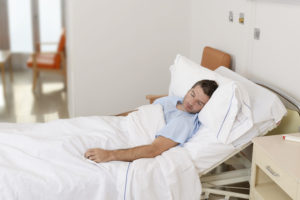 Survivors are noted to be inactive (and alone, in therapy terms) for much of the day as inpatients. This is time that is acknowledged by Professor Nick Ward at UCL as time that could probably potentially be used productively for self-rehab efforts, given some clear protocols. Upper limb work tends to be less-emphasised in inpatient rehab, in favour of the ‘big moves’; ie, seat to stand, weight-bearing, gait control attempts, muscle strengthening etc. Upper limb needs focus, but because this is most often not the case, patients often get frustrated.
Survivors are noted to be inactive (and alone, in therapy terms) for much of the day as inpatients. This is time that is acknowledged by Professor Nick Ward at UCL as time that could probably potentially be used productively for self-rehab efforts, given some clear protocols. Upper limb work tends to be less-emphasised in inpatient rehab, in favour of the ‘big moves’; ie, seat to stand, weight-bearing, gait control attempts, muscle strengthening etc. Upper limb needs focus, but because this is most often not the case, patients often get frustrated.
Many ‘ignore’ their more-affected upper limb during the day except for some stretching of stretching, and upper limb splinting & sling usage can seem to ‘get in the way’ of this. But not prioritising the upper limb, especially grasp and release ability, even if the hand seems completely ‘lifeless’, is a big mistake. Patients could do with knowing what kinds of self-rehab strategies would be likely to be productive. but with so many other priorities, what can be done?
70% of survivors will be left with upper limb difficulties. Successful Stroke Survivor manual and corresponding DVDs contain lots of exercises to help you train your more-affected upper limb. Given that you can be in a seated position, you will not be endangering yourself in terms of balance, leading to a possible fall. Take your bad hand and play with it with your good hand ceaselessly, stretch it, try to do tasks with it all the time, and do the myriad of trial and error experiments to try and produce breakthroughs.
For early in-hospital self-rehab, you need to be doing is ‘as much as you can’. Please note, the therapists must be consulted at all times if there is any doubt at all, as there will be many issues, from shoulder subluxation and pain, to upper limb splints that need guidance to be removed (if indeed a  good thing to do so – it may not be, depending on daily presentation) that will be in play. One thing stands out from the evidence: that it has been shown that family participation in exercise routines for stroke patients empowers the caregiver’s help and may reduce their stress levels. Which is definitely a good thing. Making family members, carers and friends feel they are useful and contributing to the process is good.
good thing to do so – it may not be, depending on daily presentation) that will be in play. One thing stands out from the evidence: that it has been shown that family participation in exercise routines for stroke patients empowers the caregiver’s help and may reduce their stress levels. Which is definitely a good thing. Making family members, carers and friends feel they are useful and contributing to the process is good.
From admission to discharge, by the way, you will receive a very small measure of upper limb rehabilitation compared to what your brain actually needs in order to stimulate new connections at this critical time. Recent findings show that intensive arm training early after stroke is acceptable and beneficial to patients (physically and psychologically). However, statistics also show that you will complete less than 4 minutes of activity-related arm training daily during rehabilitation (less than 4 minutes during physiotherapy and 11 minutes during occupational therapy). You might get more; it all depends on your hospital. It’s possible to try and do some in-hospital upper-limb training to boost this dose: check the ward’s rules with your therapist.
If you’re a current patient reading this, you’ll understand that your therapists can’t be there in the weekends or after work hours (although in some hospitals there are services to extend therapy hours): but still, your top priority is to regain crucial movement and take advantage of that ‘therapeutic time-window’ they talk with you about. These circumstances can actually be taken as a chance for your family members, carers and friends to become involved if they can, learning about the nature of your limitations and finding the out the best exercises to do to to help combat your limitations. A caution here. By this, I do not mean that they can must be moving you without your therapist’s guidance, permission and encouragement.
 Ask your therapists for starter strategies for safe upper-limb work that you and your family/carers can do to supplement the work they are doing with you: they will be pleased that you asked. This guide shows safe stretches and a method to introduce upper limb exercise and comes with this laptop exercise board you can possibly use too (again, seek your therapist’s advice).
Ask your therapists for starter strategies for safe upper-limb work that you and your family/carers can do to supplement the work they are doing with you: they will be pleased that you asked. This guide shows safe stretches and a method to introduce upper limb exercise and comes with this laptop exercise board you can possibly use too (again, seek your therapist’s advice).
Your therapists are not miracle workers. They can seem to be so! But even they will acknowledge that they are just the essential guide to the process. They need some help if your chances for recovery are to be optimised, but help from family members, carers and friends to continue rehab needs to be balanced with risk. A major problem often encountered is that stroke survivors and their family members, carers and friends are usually not sure what exercises to usefully or safely perform.
The first key to success is understanding that keeping safe is good, but not moving is bad. Find out what can be done safely and do more, not less.
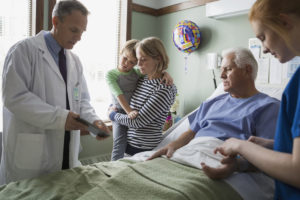 Information provision remains a commonly reported unmet need in rehab. Stroke survivors and carers consistently report that they do not know enough about the mechanisms, cause, and consequence of stroke. It is difficult to know whether this is a true expression of lack of needed knowledge or a reflection of stroke survivors’ and carers’ continued post-stroke uncertainty. A paper by Dr David Clarke and Professor Anne Forster at Leeds University published in 2015 in the Journal of Multidisciplinary Healthcare shows clearly that it’s important that stroke teams ensure that messages to patients and their families are consistent and that not only basic information is provided but also that they have the knowledge of where and how to access further information if required.
Information provision remains a commonly reported unmet need in rehab. Stroke survivors and carers consistently report that they do not know enough about the mechanisms, cause, and consequence of stroke. It is difficult to know whether this is a true expression of lack of needed knowledge or a reflection of stroke survivors’ and carers’ continued post-stroke uncertainty. A paper by Dr David Clarke and Professor Anne Forster at Leeds University published in 2015 in the Journal of Multidisciplinary Healthcare shows clearly that it’s important that stroke teams ensure that messages to patients and their families are consistent and that not only basic information is provided but also that they have the knowledge of where and how to access further information if required.
As far as weight bearing, balance and gait control etc are concerned, an interesting Australian paper of note was published this year in the Journal of Physiotherapy: Dorsch et al (2019) In inpatient rehabilitation, large amounts of practice can occur safely without direct therapist supervision: an observational study which concluded that in an inpatient setting, a large percentage of practice can be performed as semi-supervised practice and that this did not appear to compromise the time spent in active practice or patient safety. This was a small scale study (1319 patient observations) carried out in Australia, but with some possibly important observations… showing perhaps that involving families, carers and friends can contribute somewhat in ramping up the amount of weight-bearing/walking done in hospitals.
 Similarly for upper limb, perhaps encouraging a ‘directed to do/facilitated’ approach may have some merit to assist survivors to perform more adequate amounts of exercise with consideration to their differing presentations.
Similarly for upper limb, perhaps encouraging a ‘directed to do/facilitated’ approach may have some merit to assist survivors to perform more adequate amounts of exercise with consideration to their differing presentations.
Family members/carers or friends may possibly do better by being supported/’equipped’ (in terms of a guiding of ‘how to help’) and maybe even external (NHS funded) short (online?) training sessions given, or maybe DVD guidance?).
This may go some way to counteracting feelings of powerlessness to help that carers often report whilst their loved ones are in clinic and similarly, once they are discharged,
Certainly, as those closest to you are usually the ones who will be carrying the ‘burden of care’ forward, addressing ‘carer needs’ requires attention. For sure, a focus solely on your needs alone can inadvertently lead to neglecting to support people who may experience considerable anxiety and hardship (depending on circumstances) once you are discharged. They need to be as clued up as possible in order to help drive your rehab needs further. Knowledge is power!
(Please help inform readers further by writing your view/and or experiences in the Comments box below)
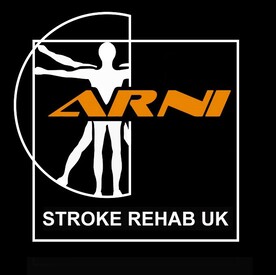
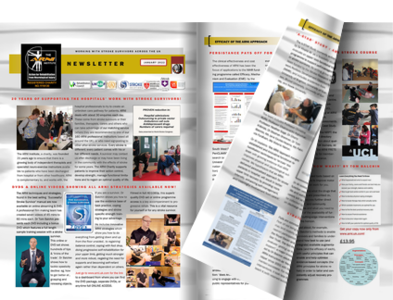
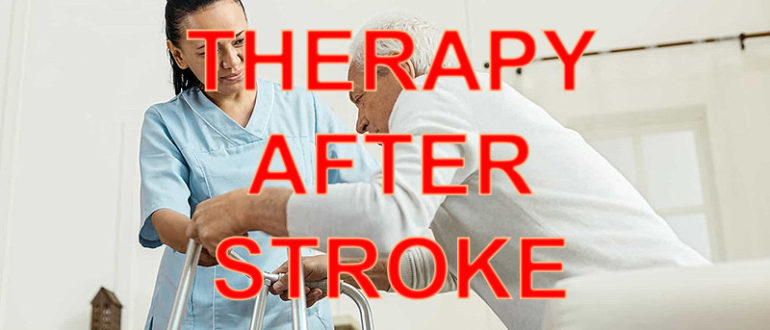

One Comment
Having spent a week in a stroke ward,I can confirm the boredom aspect.
Although extended sleeping was an important step to recovery after brain trauma,most days seemed to have no structure
My family brought me books (found it hard to scan lines), simple puzzles and discussed newspaper events which helped to relieve the boredom.